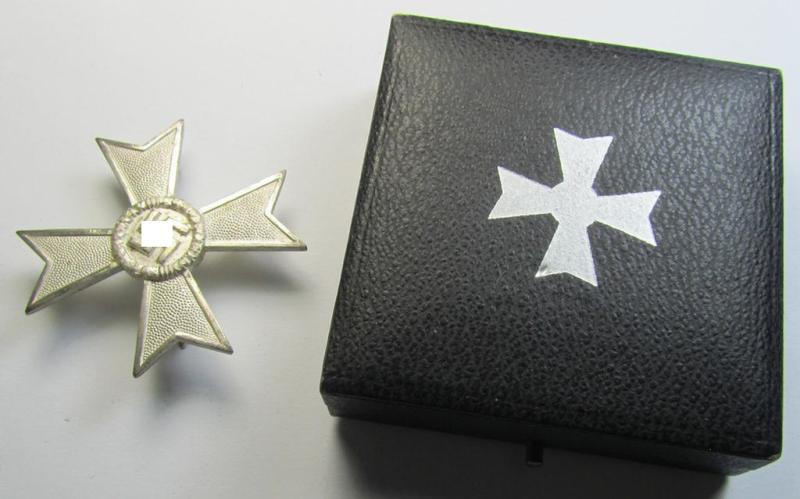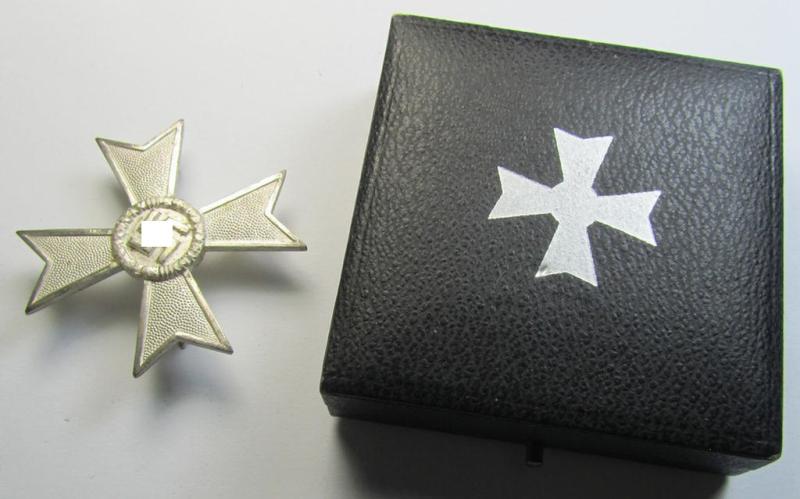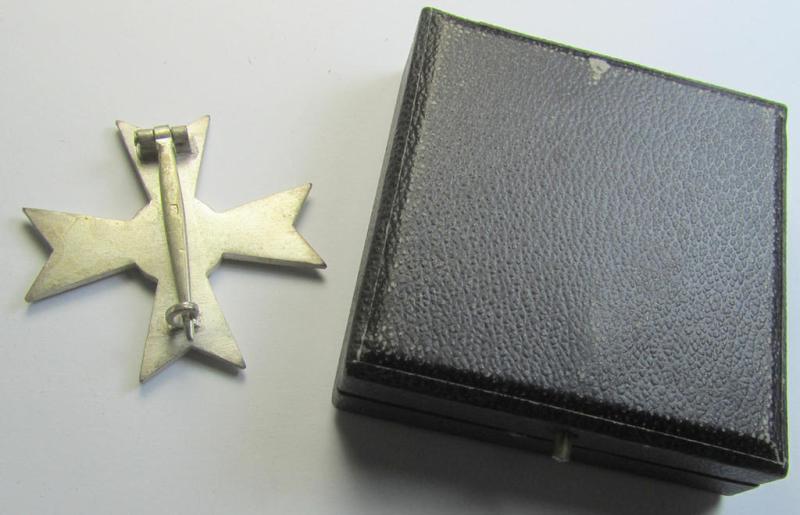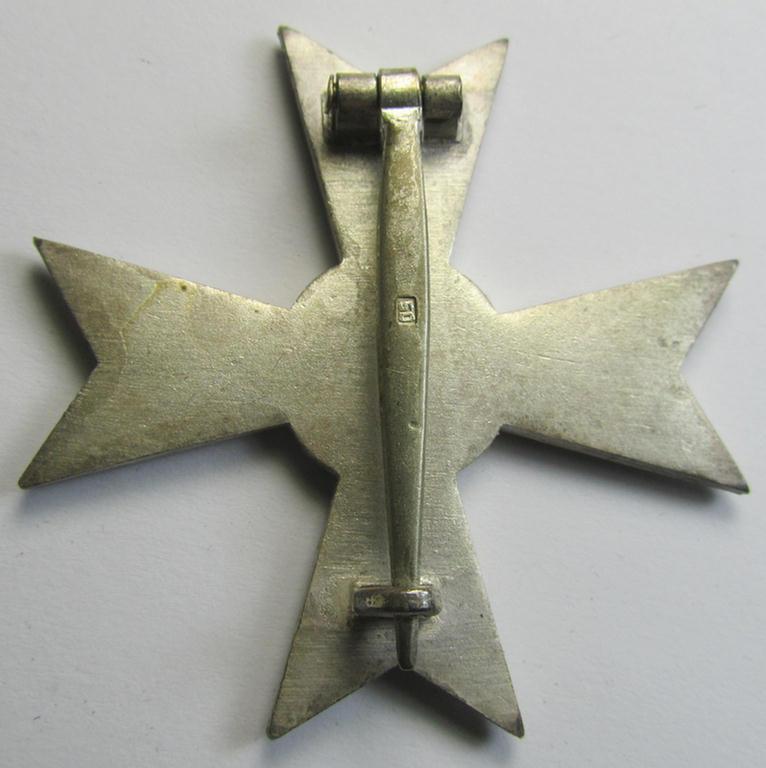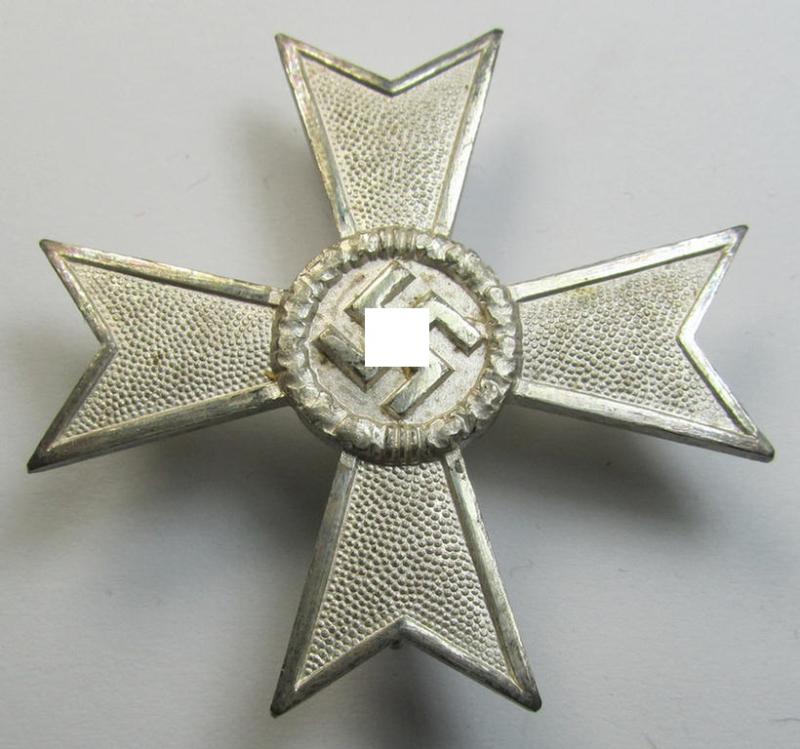Luxuriously-styled, 'Kriegsverdienstkreuz 1. Klasse ohne Schwertern' being an attractive and maker- ie. '50'-marked specimen that is executed in typical, silverish-coloured metal (ie. 'Buntmetall') and that comes stored in its period etui
The attractive - and I deem quite early- (ie. mid-) war-period - piece is executed in typical silver-coloured metal (ie. 'Buntmetall') and comes in an overall very nice- (albeit hardly worn- ie. almost mint-), condition. The naturally non-magnetic- and/or non-vaulted cross shows some (minimal) blackened- (ie. somewhat tarnished) age-patina but was most certainly never cleaned nor polished: it retains, moreover, most (ie. all!) of its typical silverish-coloured ie. 'frosted'-like finish (as can be seen on the pictures). The cross comes naturally mounted onto its functional (somewhat thicker, straight-shaped) pin- and/or: period catch (ie. catch-set-up) which are both present and fully unaltered (as can be seen on the pictures). The piece - which shows a clear makers'-designation on the back of its pin - is with certainty a piece that was produced by the Austrian maker- (ie. 'Hersteller') named: 'Karl Gschiermeister' as was based in the town of Wien (ie. Vienna). The piece came stored in its period case (which comes in an equally nicely preserved condition). The set comes as recently found and/or stored for decades: it was truly never cleaned and is just a tiny bit stained ie. dirty but retains most of its (off-factory) polished 'highlighted areas' (as can be seen on the pictures). I deem that the KvK 1st class award is a bit underestimated by the collectors' community: they can almost be graded equally as the IC 1st class. Simply an attractive and fairly luxuriously-executed (and cased!) example of a: 'KvK 1. Klasse ohne Schwertern' that that is - I deem - accordingly priced!
Code: 59745

